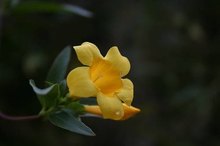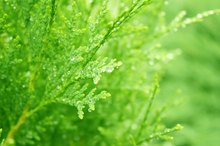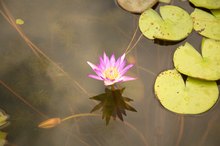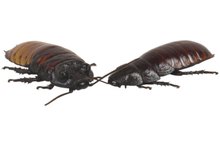What does fact checked mean?
At Healthfully, we strive to deliver objective content that is accurate and up-to-date. Our team periodically reviews articles in order to ensure content quality. The sources cited below consist of evidence from peer-reviewed journals, prominent medical organizations, academic associations, and government data.
- Heart Views: Acute Cardiac Toxicity of Nerium Oleander/Indicum Poisoning (Kaner) Poisoning
- Heart Views: Acute Cardiac Toxicity of Nerium Oleander/Indicum Poisoning (Kaner) Poisoning
- Toxins: Naturally Occurring Food Toxins
- Toxins: Naturally Occurring Food Toxins
- BMC Emergency Medicine: Fructose-1, 6-diphosphate (FDP) as a Novel Antidote for Yellow Oleander-Induced Cardiac Toxicity -- A Randomized Controlled Double Blind Study
- BMC Emergency Medicine: Fructose-1, 6-diphosphate (FDP) as a Novel Antidote for Yellow Oleander-Induced Cardiac Toxicity -- A Randomized Controlled Double Blind Study
The information contained on this site is for informational purposes only, and should not be used as a substitute for the advice of a professional health care provider. Please check with the appropriate physician regarding health questions and concerns. Although we strive to deliver accurate and up-to-date information, no guarantee to that effect is made.
Allergic Reactions to Oleanders
The most common type of oleander in North America is Nerium oleander, which has delicate pink or orange flowers 1. Another variety is the yellow oleander, or Thevetia peruviana, which is primarily found in warm and coastal climates. Though these colorful plants can add beauty to your garden, they should be handled with caution, because they can also cause dangerous allergic reactions.
Phytodermatitis
Phytodermatitis is an allergic reaction on the skin caused by exposure to a plant. Its symptoms include rashes and blisters. If an individual's skin is sensitive to plant allergies, any contact with oleander leaves can trigger phytodermatitis. The stem of the oleander plant can also produce this reaction. Both the oleander leaves and the oleander stem contain poisonous sap. Skin allergy to oleanders can be revealed through patch testing, where patches containing small amounts of the offending allergen are taped to the patient's skin.
- Phytodermatitis is an allergic reaction on the skin caused by exposure to a plant.
- If an individual's skin is sensitive to plant allergies, any contact with oleander leaves can trigger phytodermatitis.
Toxicity
Side Effects of Eating Jasmine Flowers
Learn More
If ingested, the seeds of the yellow oleander are toxic. They are visually appealing, and are also referred to as "lucky nuts." Fortunately, they taste terrible and any child or adult eating them would be inclined to spit them out immediately. Both the yellow oleander and the ordinary Nerium oleander also have toxic leaves. Allergic reactions to ingesting oleander can include nausea, abdominal pain, diarrhea and cramping. Heart disturbances and death may occur in severe cases.
- If ingested, the seeds of the yellow oleander are toxic.
Cautions
Ingestion of oleander by pregnant or breastfeeding women has been linked to infant seizures and a slowed heart rate among infants. Oleander extract has been prescribed by doctors as an herbal cancer treatment, as well as for lesser ailments such as asthma, menstrual pain and muscle cramps. Care should be taken with medicinal use because of its high potential to trigger an allergic reaction.
Preventing and Treating Allergic Reactions
Can You Eat Rhubarb Leaves?
Learn More
After pruning the oleanders in your garden, wash your hands thoroughly. This will prevent the oleander sap from irritating your skin and eyes. Wearing gloves while gardening near oleanders is also a wise precaution. In the case of ingestion, swallowing charcoal tablets can help mitigate the toxicity. Induced emesis, or vomiting, should also be performed. If allergic symptoms continue, the patient should visit a hospital and undergo gastric lavage, or stomach pumping, to remove any lingering oleander traces.
- After pruning the oleanders in your garden, wash your hands thoroughly.
- If allergic symptoms continue, the patient should visit a hospital and undergo gastric lavage, or stomach pumping, to remove any lingering oleander traces.
Related Articles
References
Writer Bio
Alexander Knoll has been a freelance writer since 2008. His articles have appeared on BANKS.com, LitCharts.com and the SR Education group of Web sites. In 2004, he received the Freeman-Asia Fellowship to study in Japan. He holds a Bachelor of Arts in English from Knox College.








